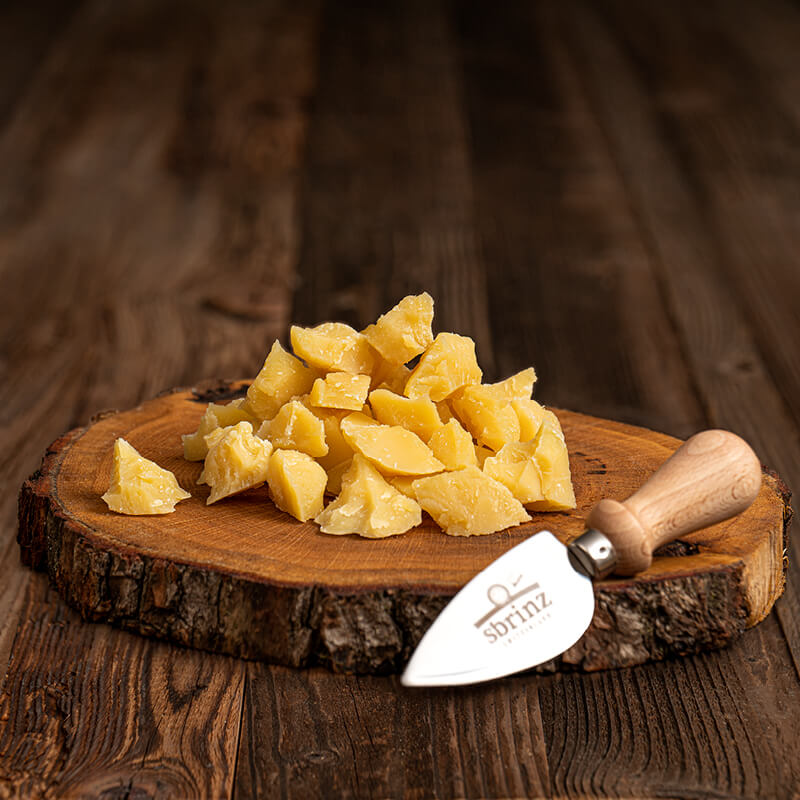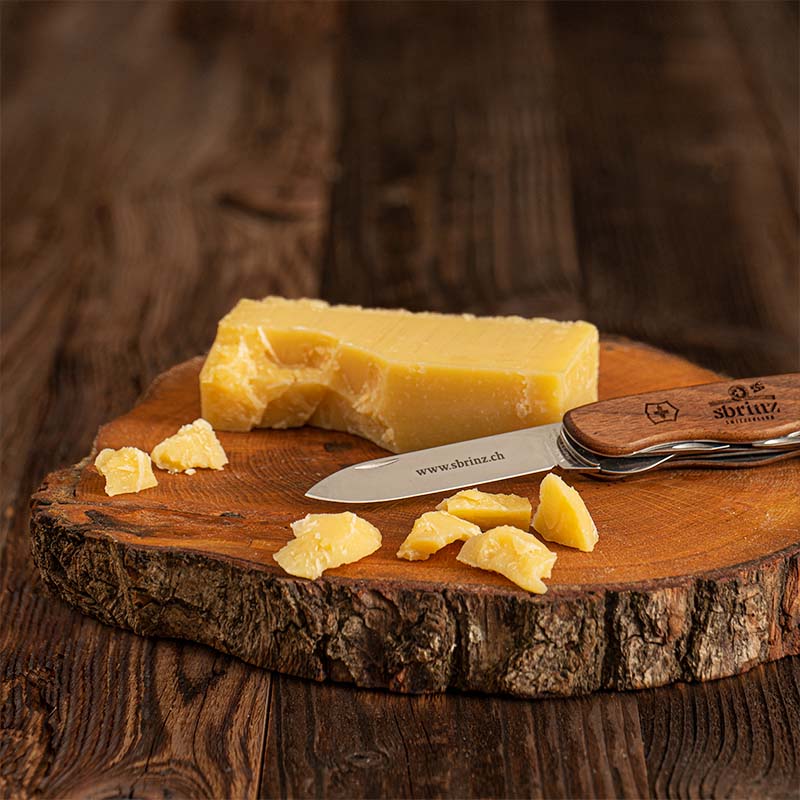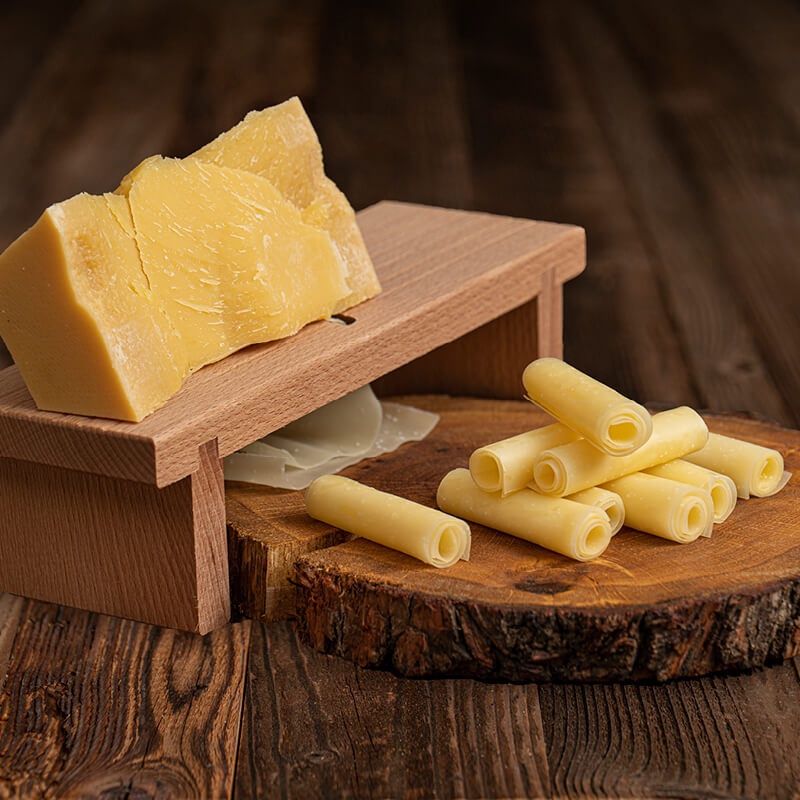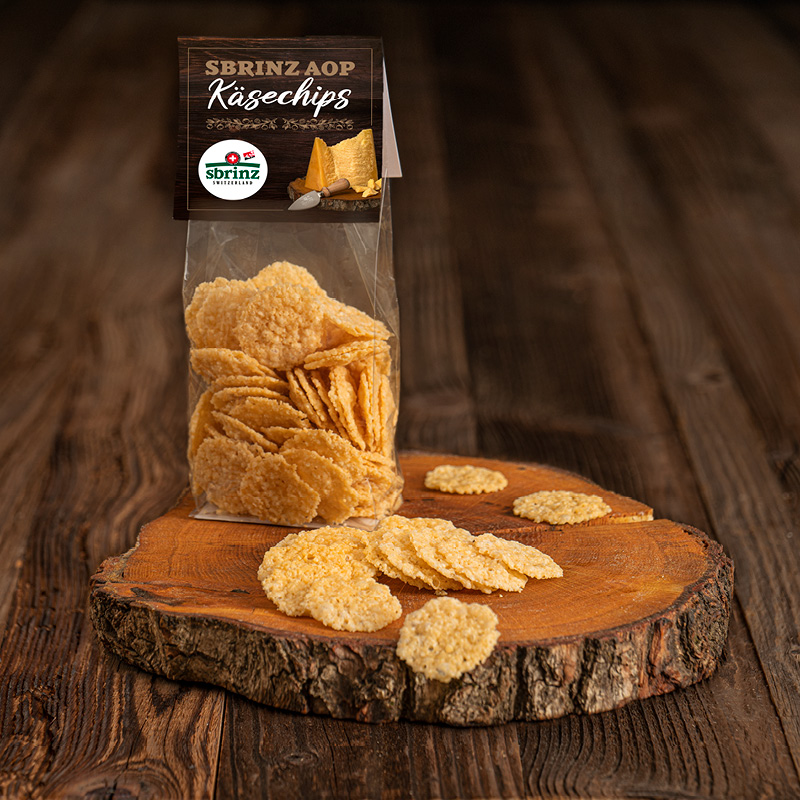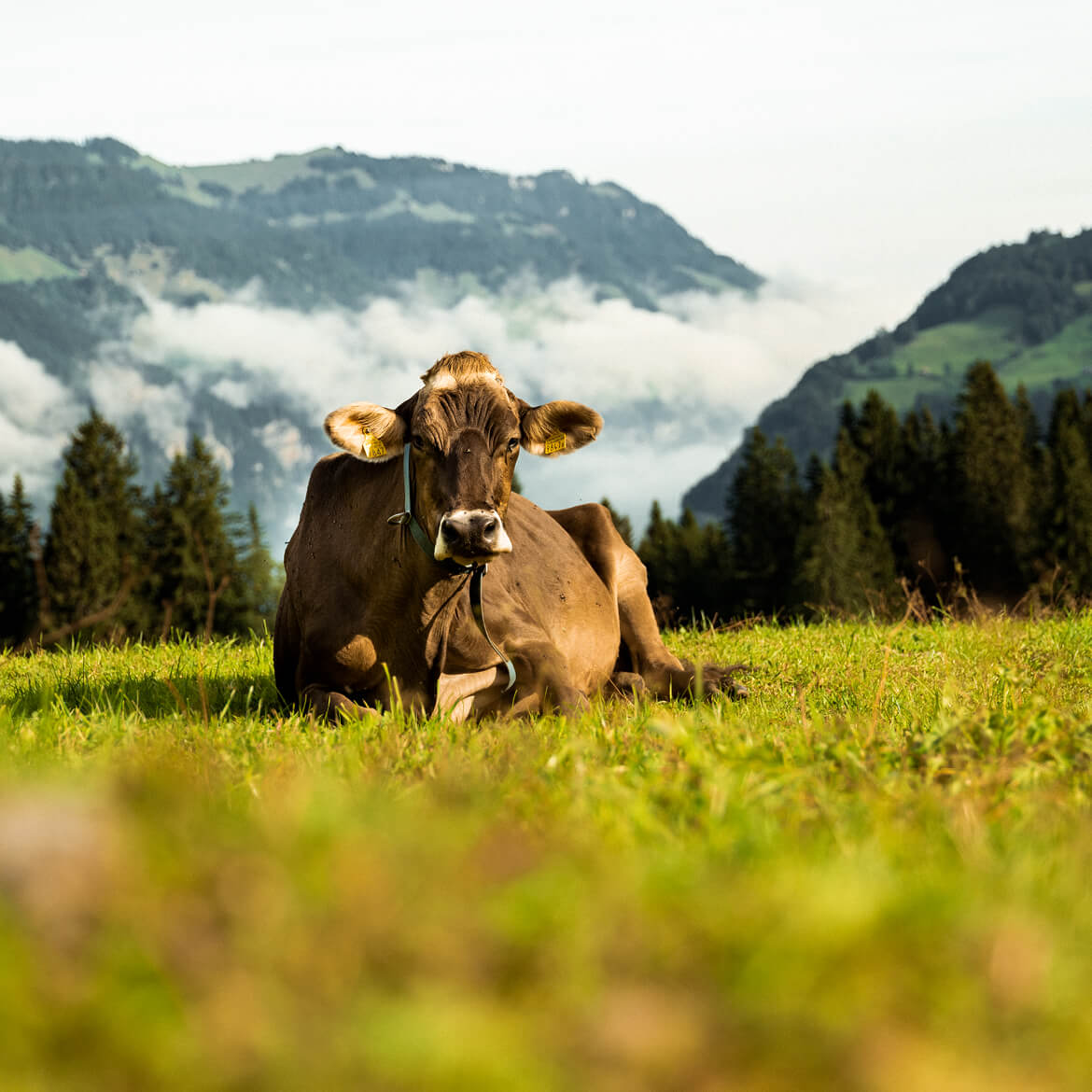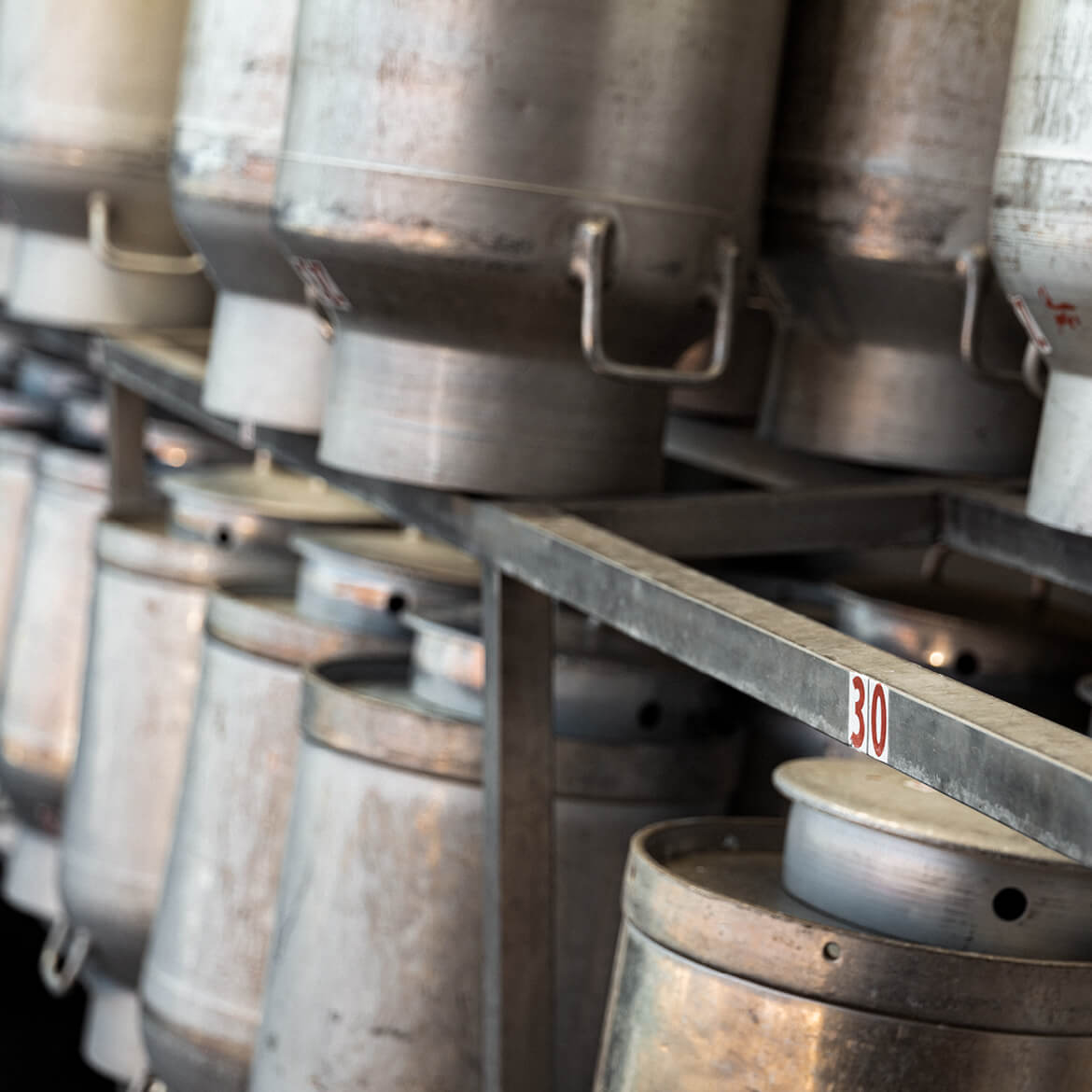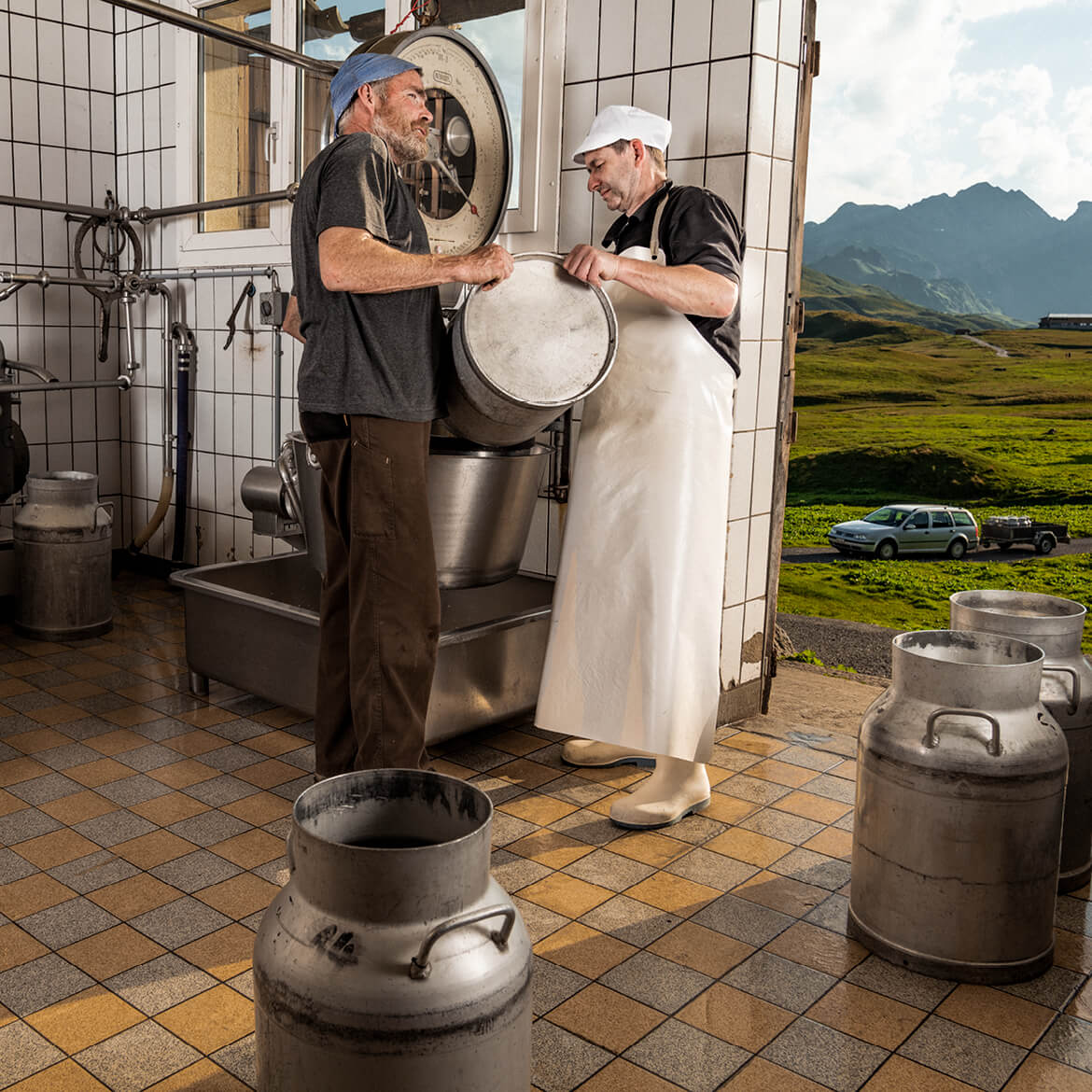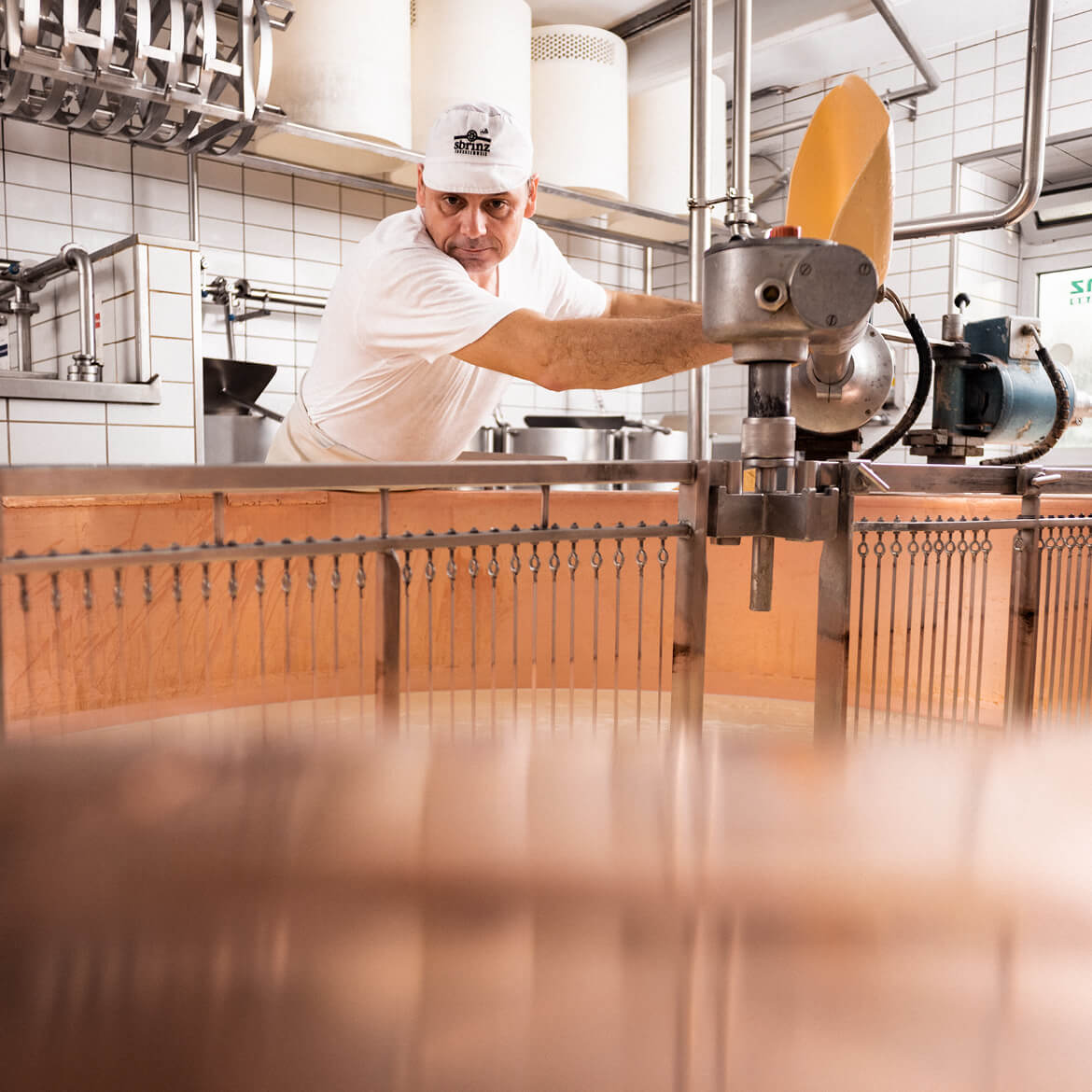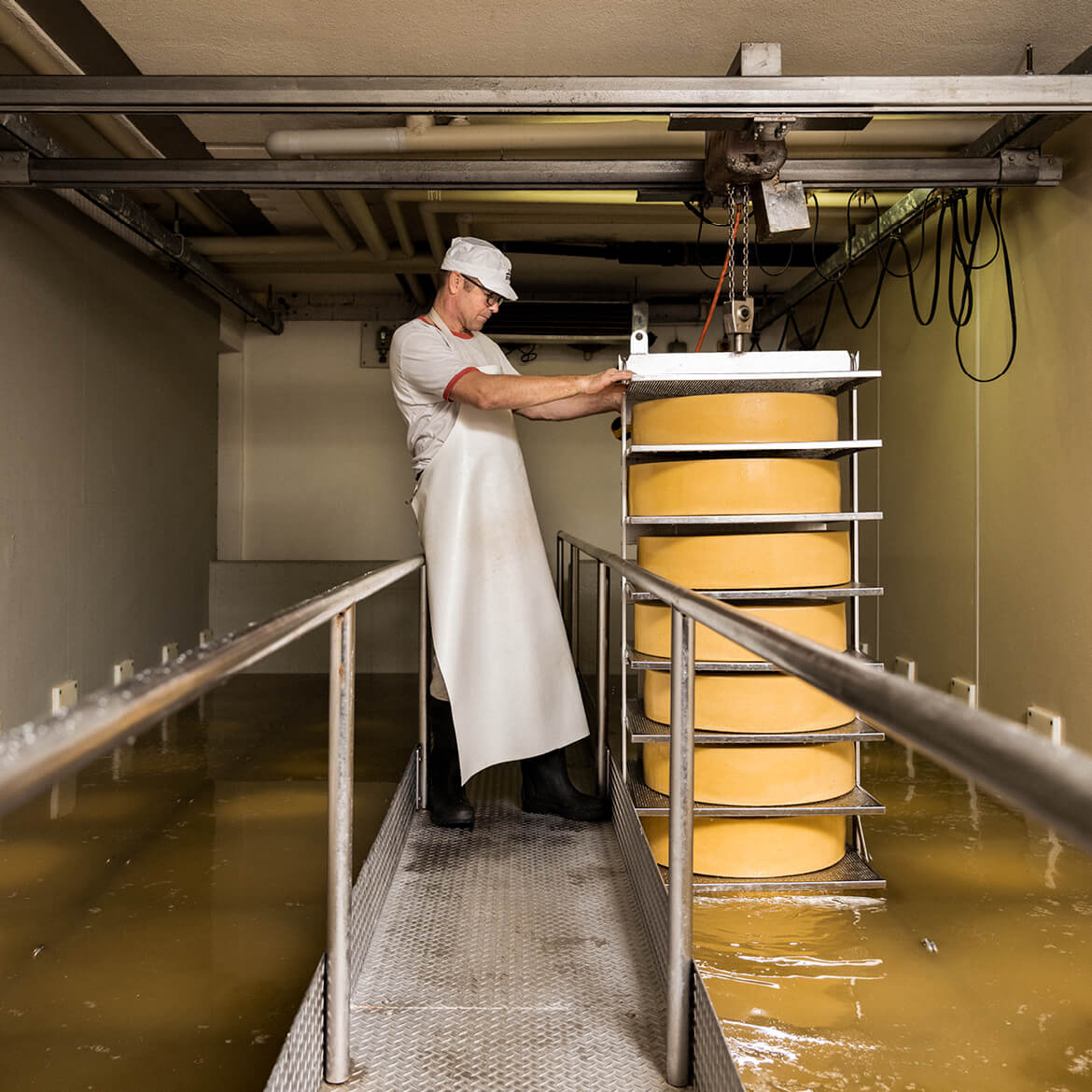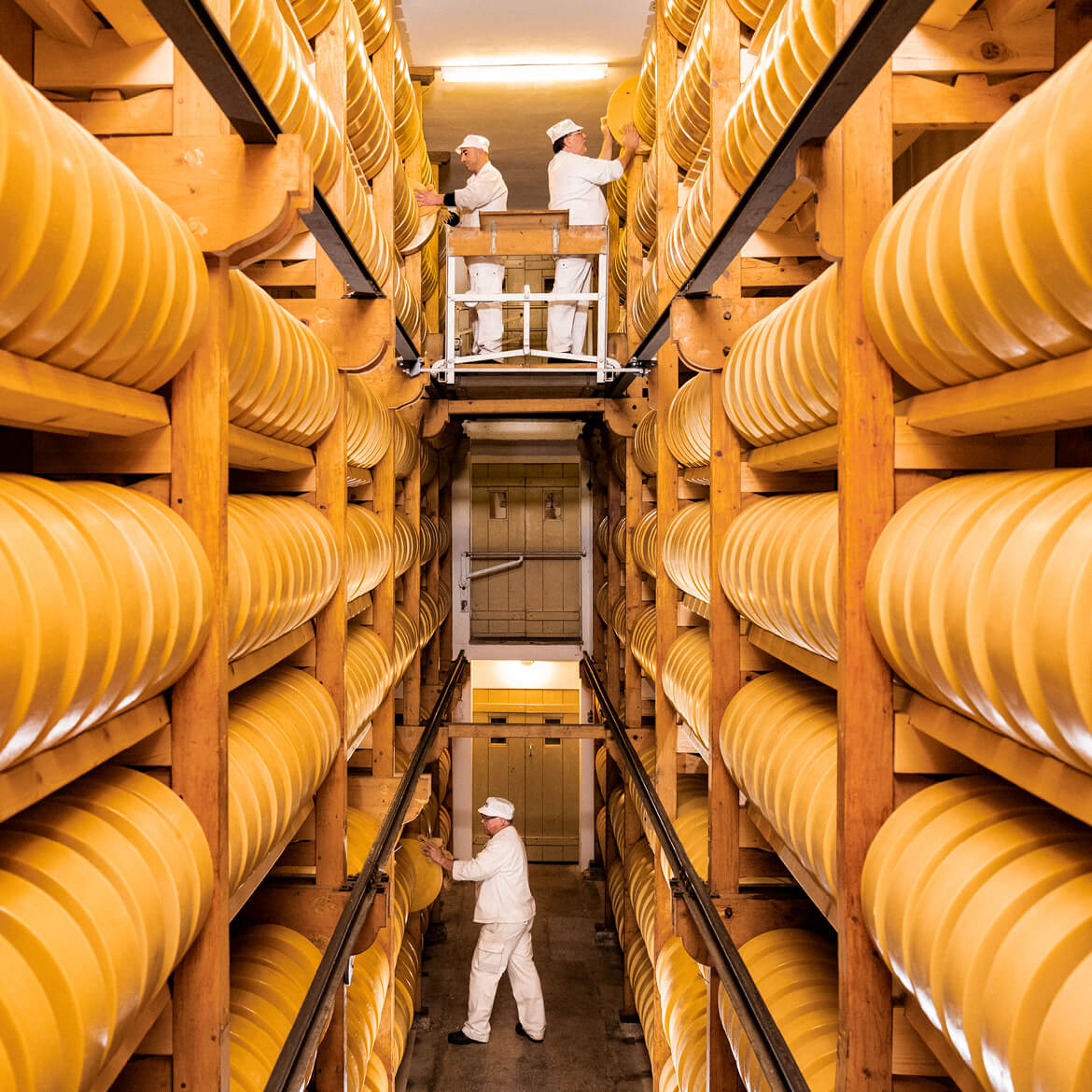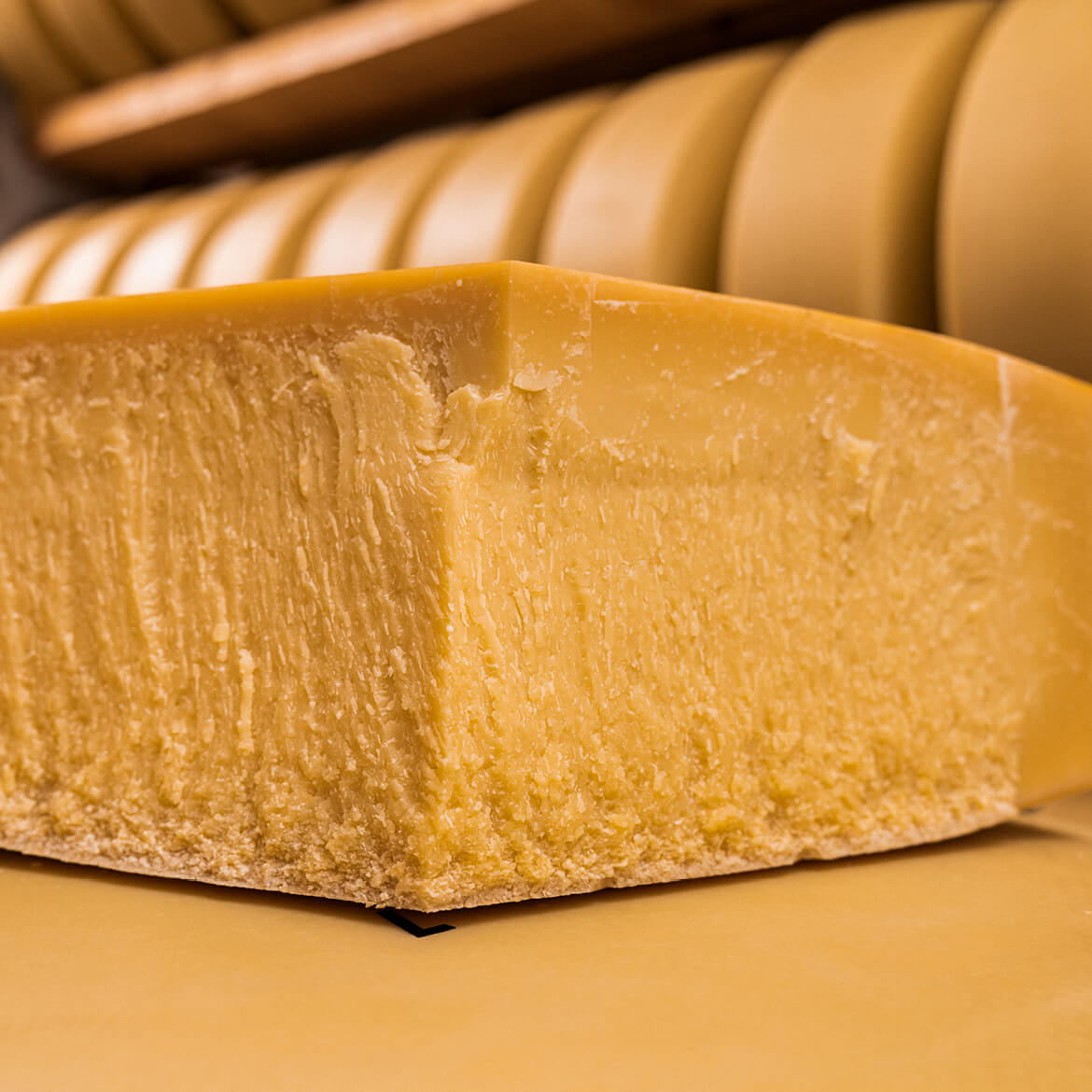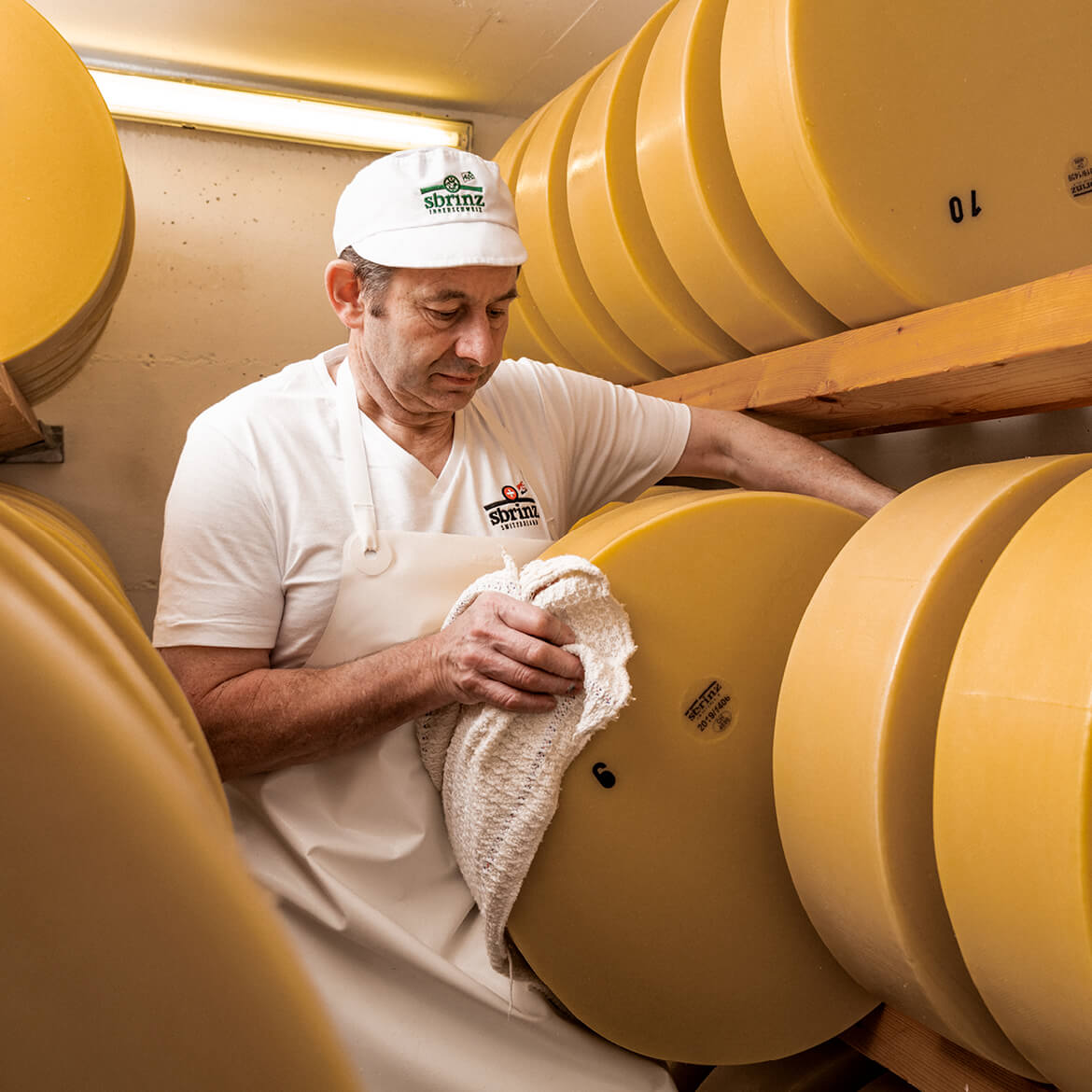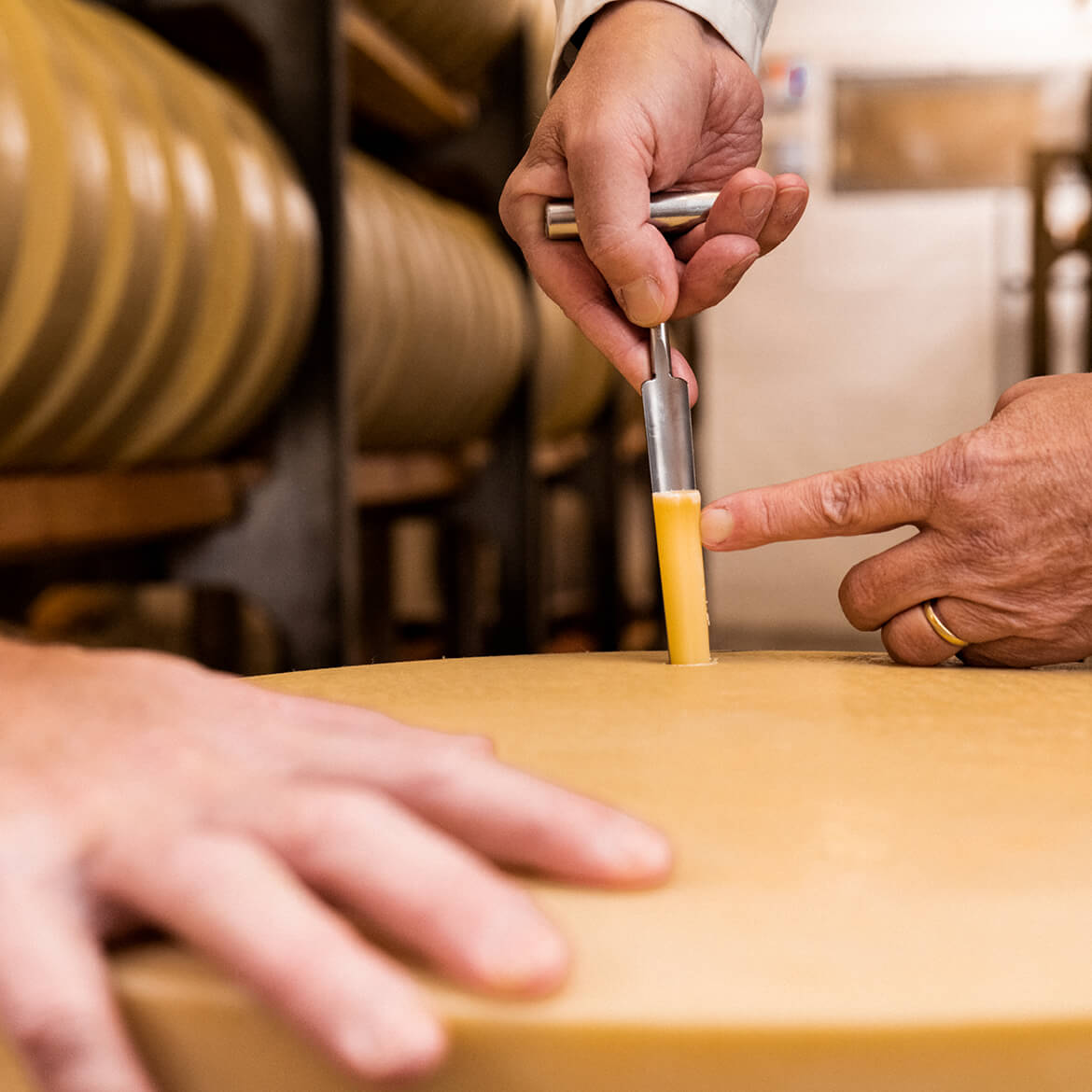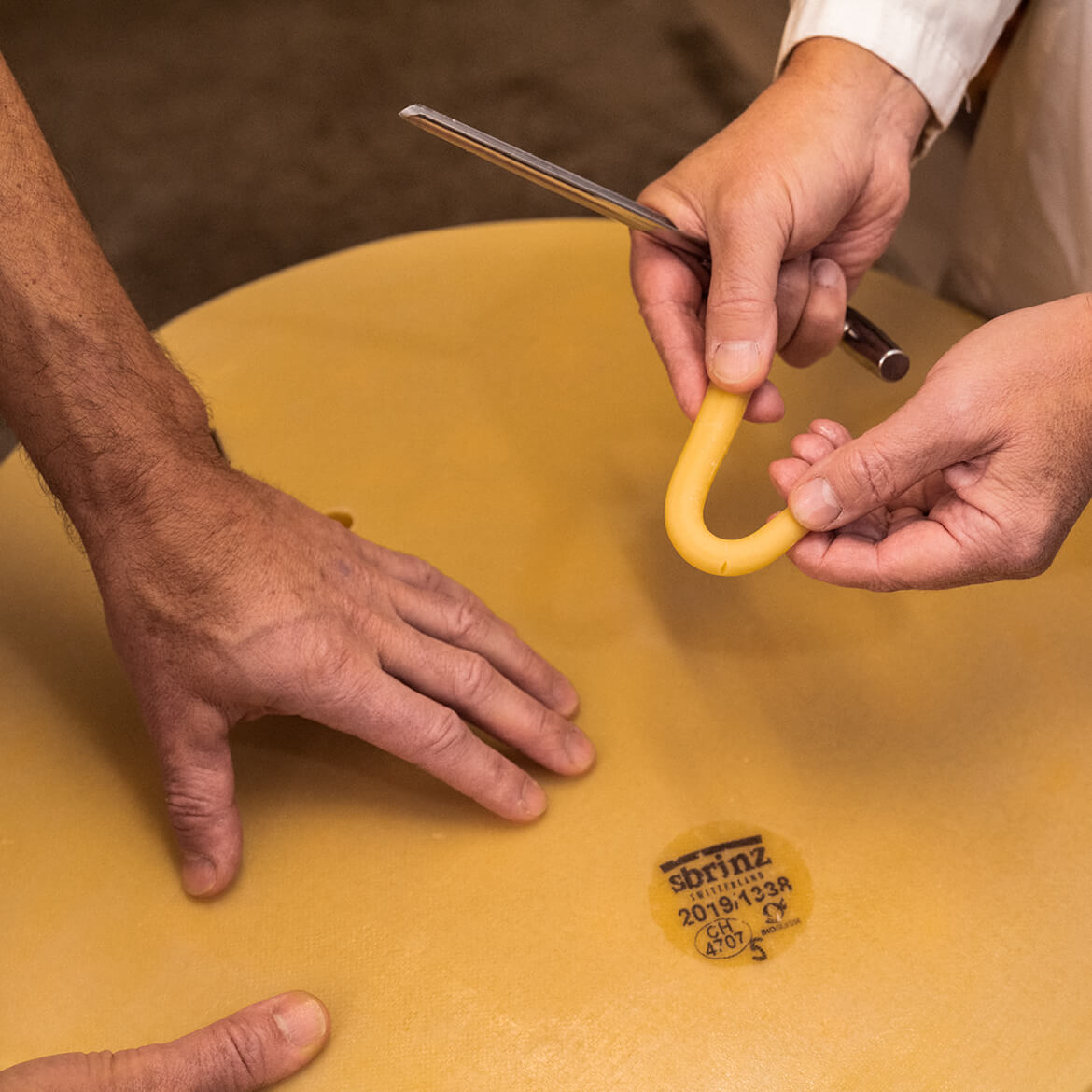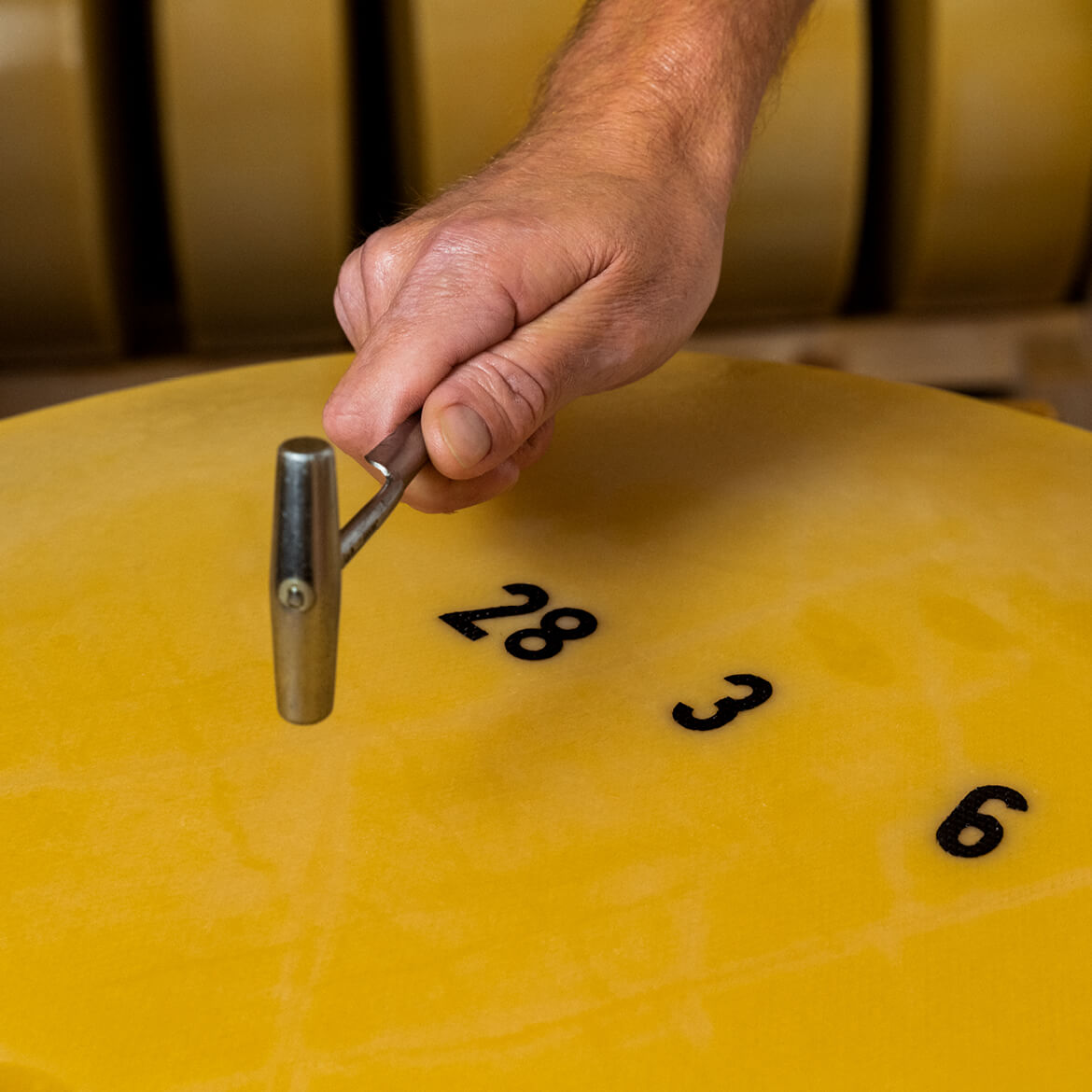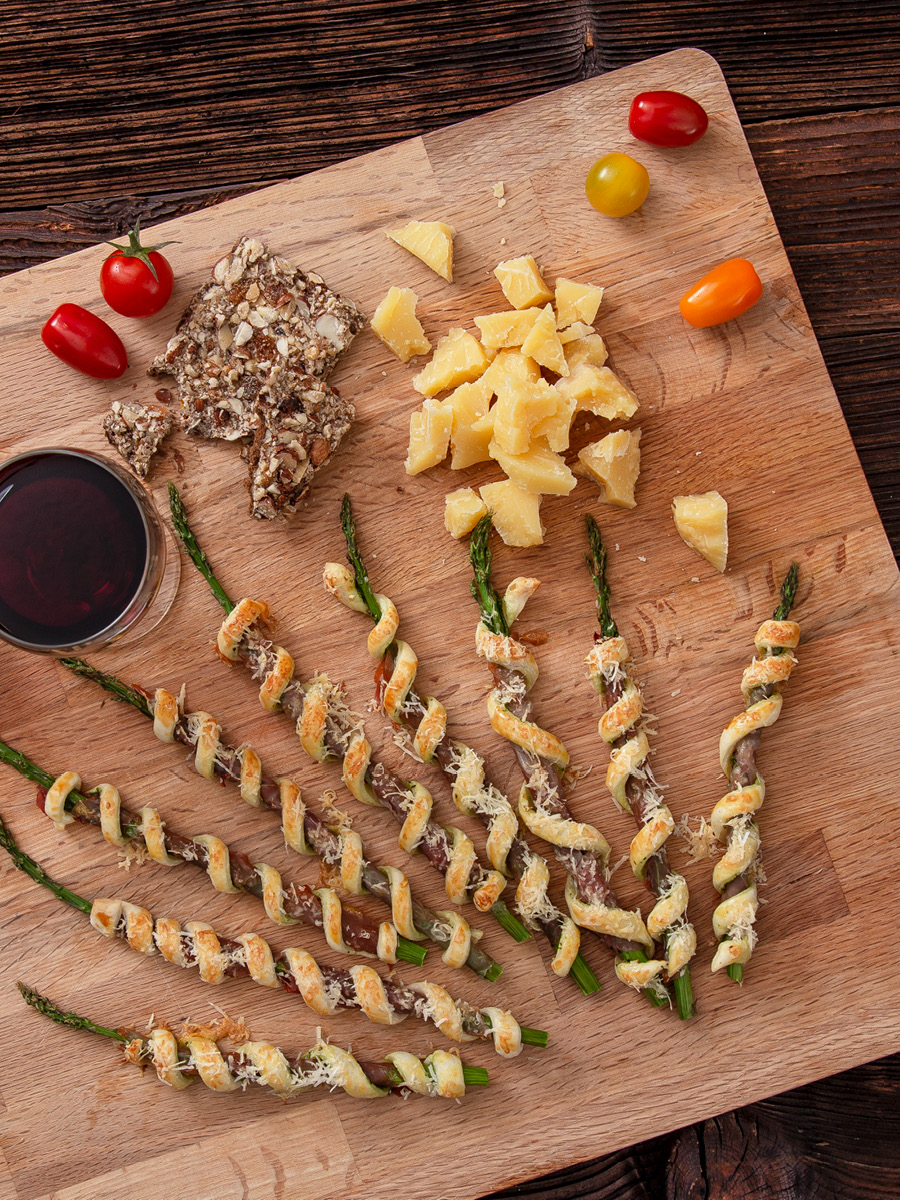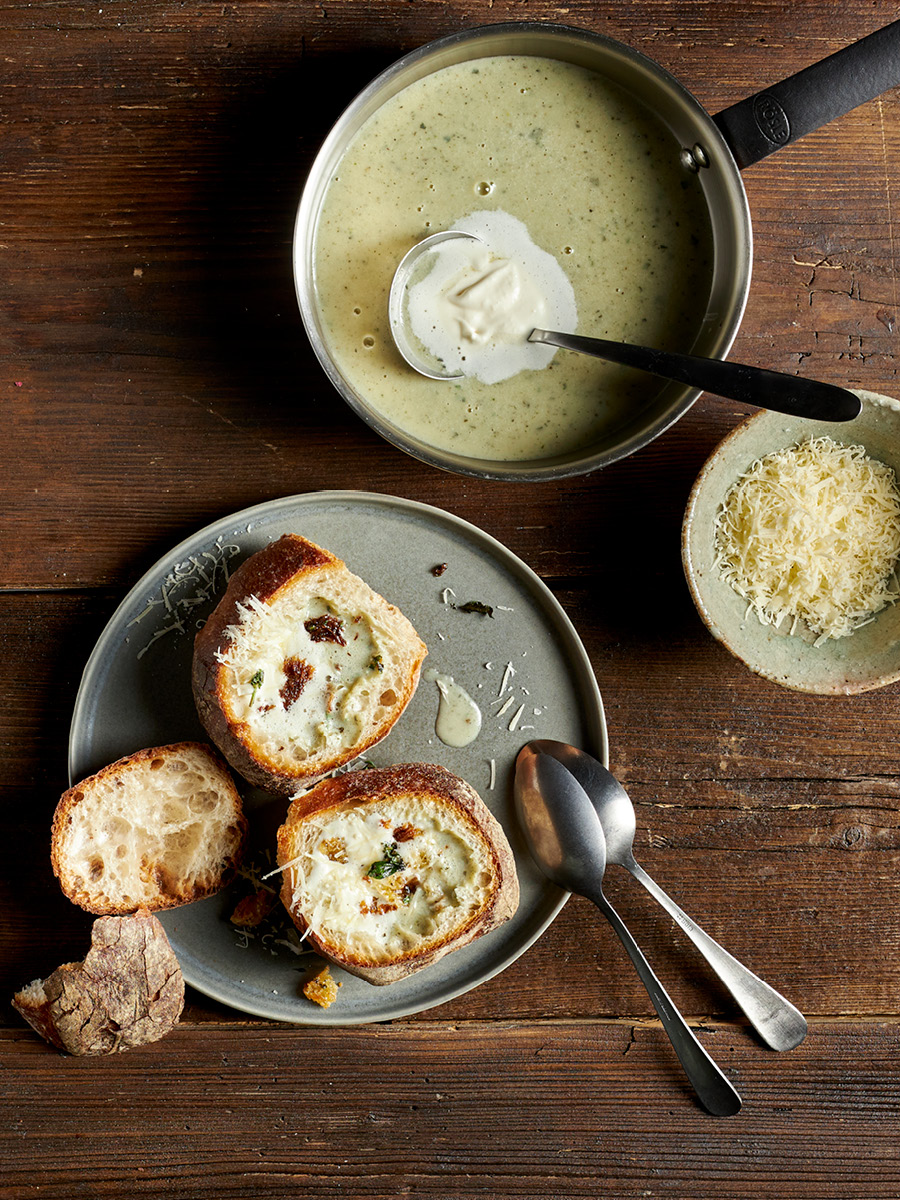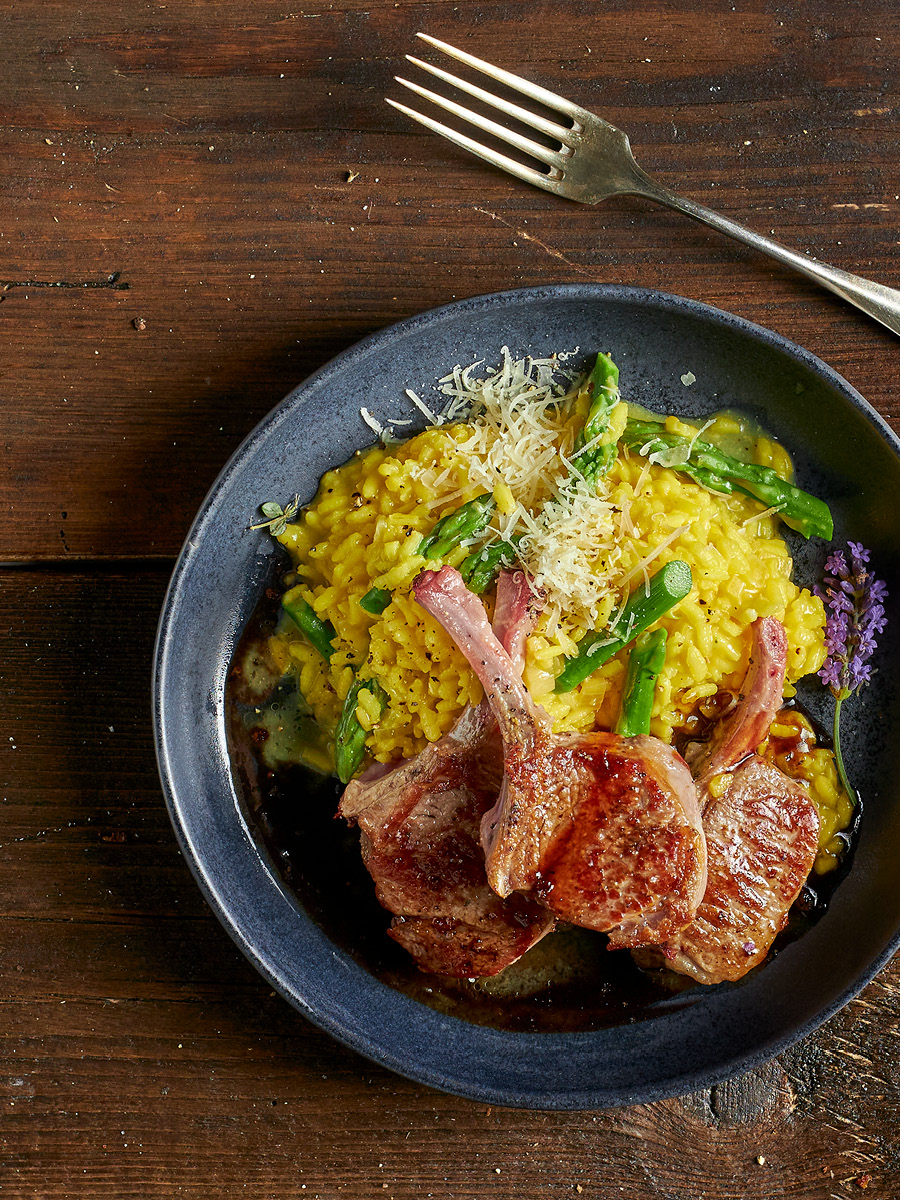Craftsmanship
Sbrinz production in detail
From fresh milk to finished product: this exciting process still contains the same work steps as many centuries ago, even though technology has been incorporated in many fields. Get to know the individual stages of cheese production and find out how you yourself can make cheese.
The cheesemaking process
Cheesemaking explained
Our key factors
The recipe for really good cheese
In Central Switzerland, everything is ‘slow speed ahead’. Sbrinz cheesemakers know that slow and steady wins the race – and in the case of Sbrinz the flavour as well. Ever since the 16th century, Sbrinz has been made traditionally by hand in copper vats. Production is in perfect harmony with nature: apart from raw milk, rennet, cultures and salt, Sbrinz does not contain any other ingredients or additives. Because genuine quality doesn’t need any tricks.
01
Agriculture
The best milk is the basis
The specifications stipulate that the distance between farms and the cheese dairy should not exceed 30 km. When processed, milk is 24 hours old at most. Sbrinz is made exclusively from raw milk. Only silage-free milk can be used.
AOP specifications
02
Cheese dairies
Milk as the basis
Cheesemaking is a craft that requires a wealth of expertise and a great deal of finesse and precision. In many respects, the process is exactly as it was several hundred years ago. Here is a nine-step description of the cheese-manufacturing process.
The production process
03
Storage
The time factor is decisive.
Sbrinz AOP needs time to mature – a lot of time. The ideal age for consumption is 24 months. The more mature the cheese, the more aromatic and spicy its taste.
Visit the maturing cellar
04
Quality
The A & O entails stringent checks.
Sbrinz bears the AOP label. This quality seal guarantees that by means of constant checks throughout the production process, consumers get a 100% natural, first-class product – free from all additives.
AOP specifications


